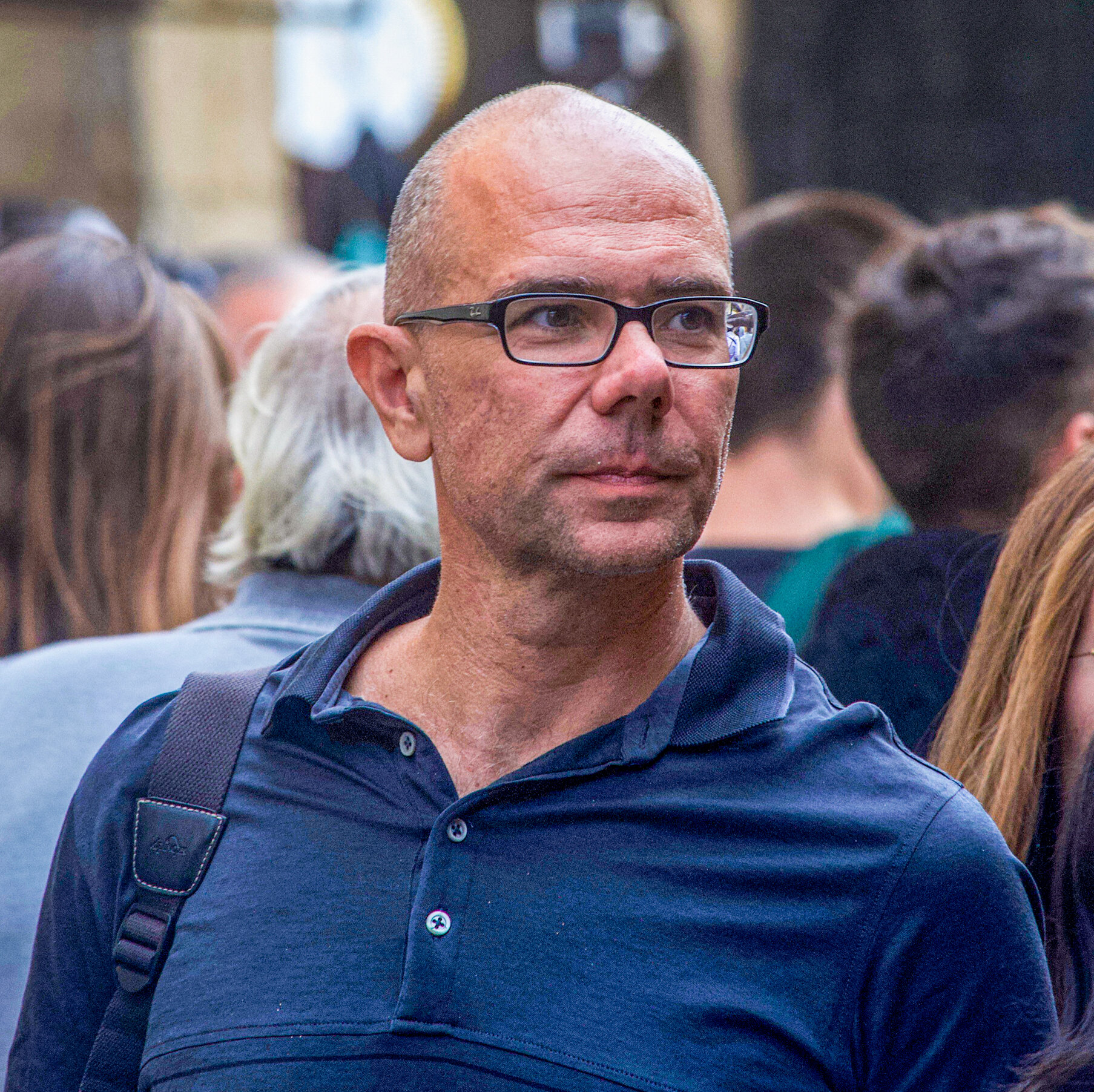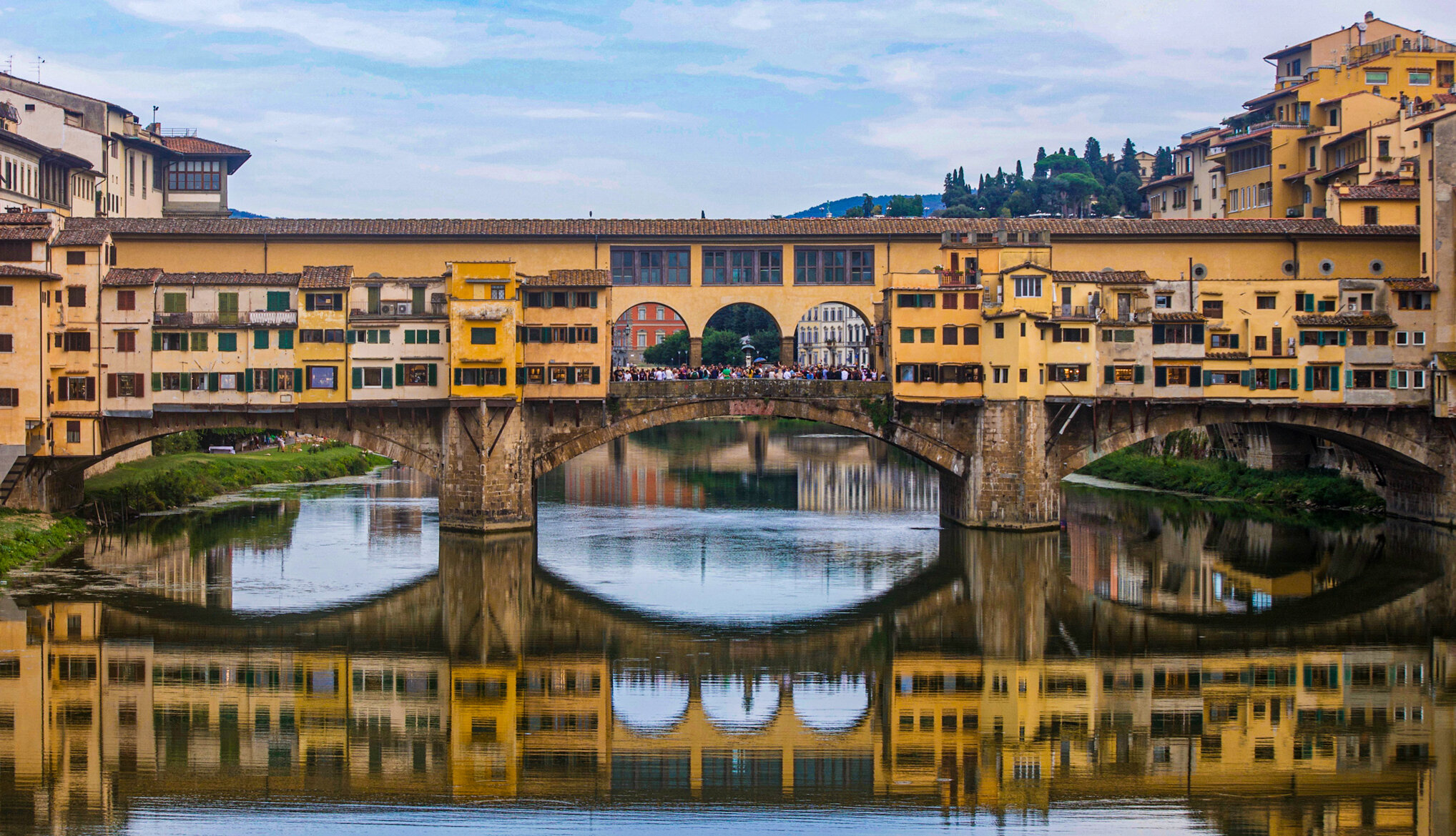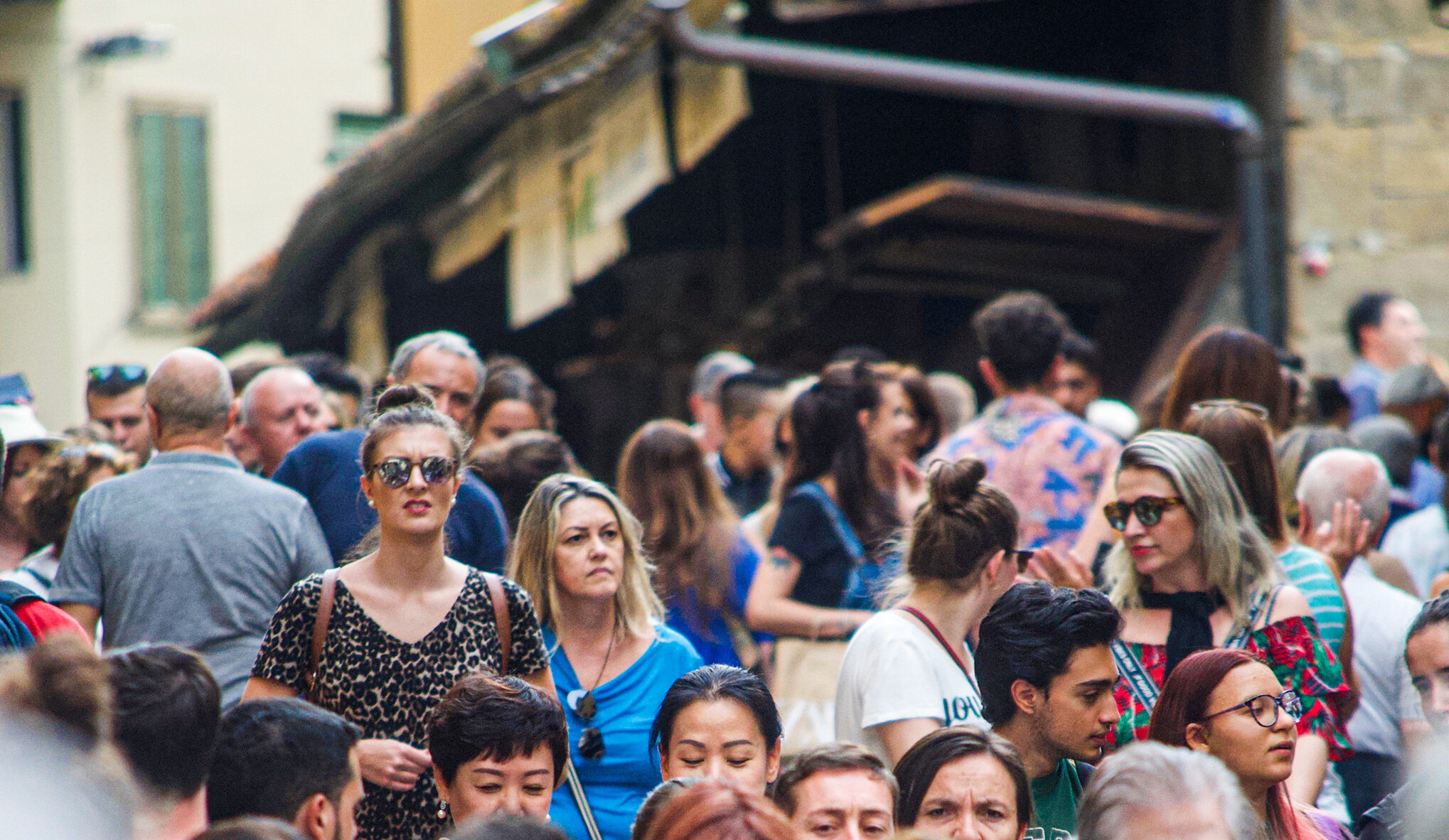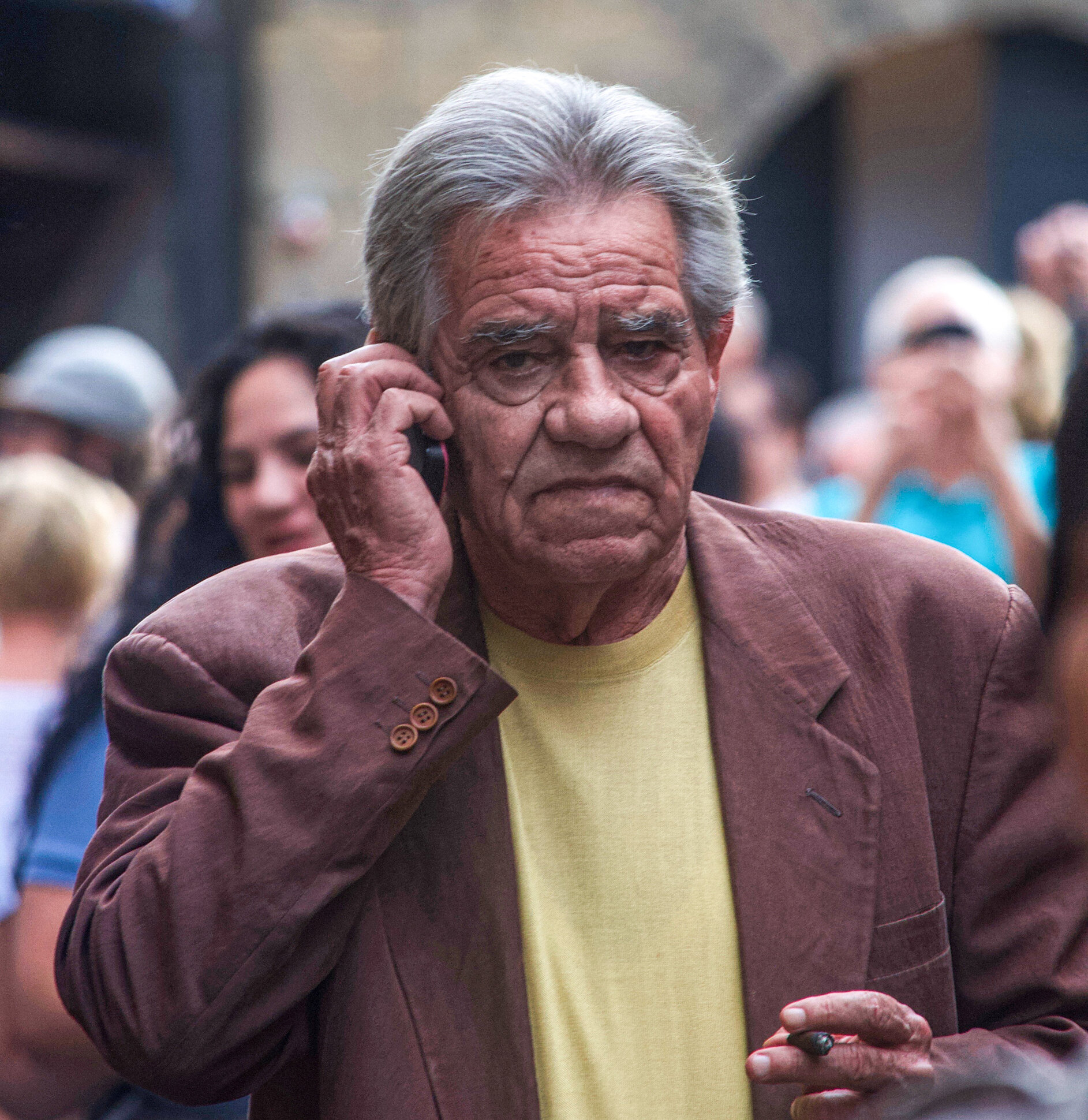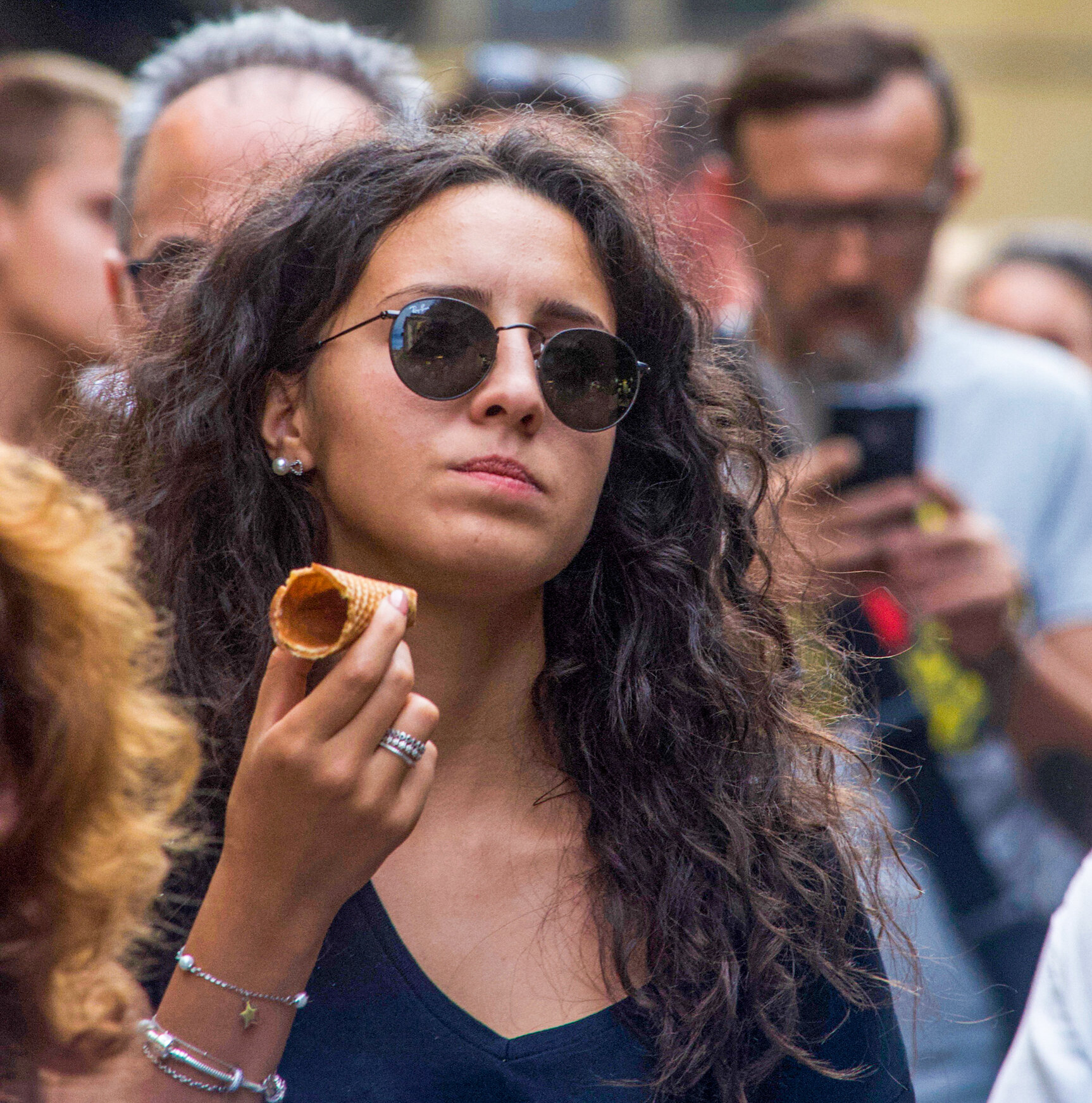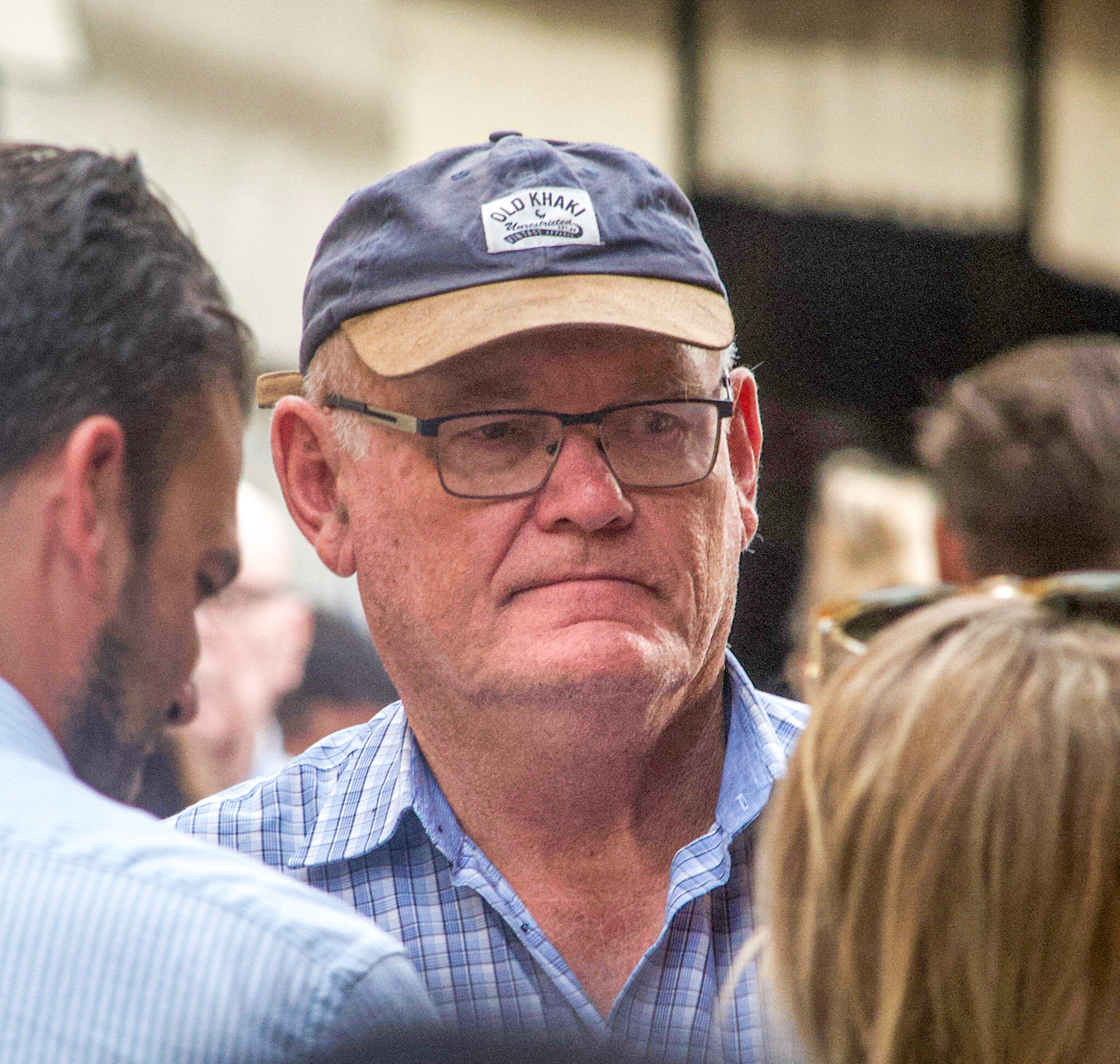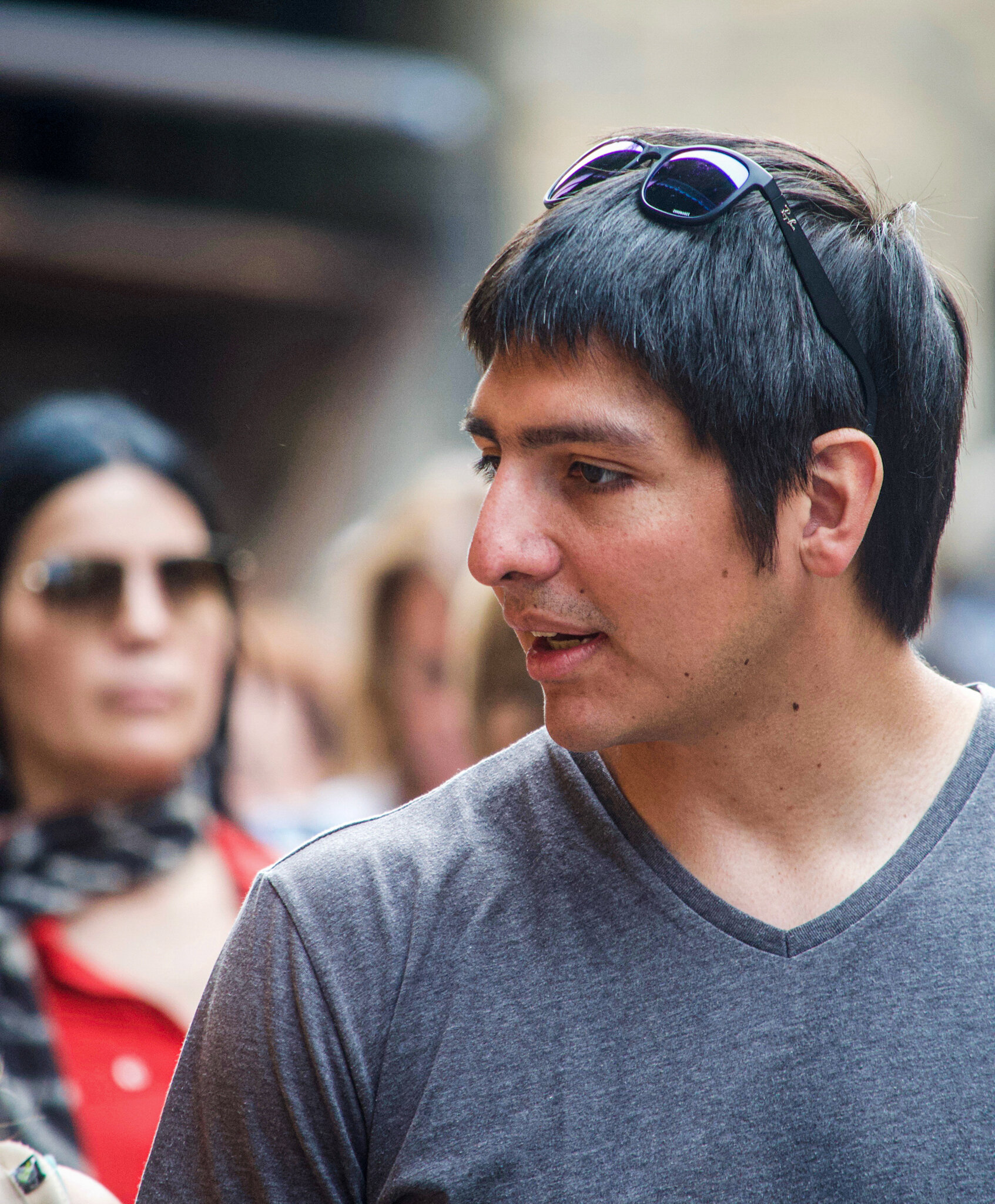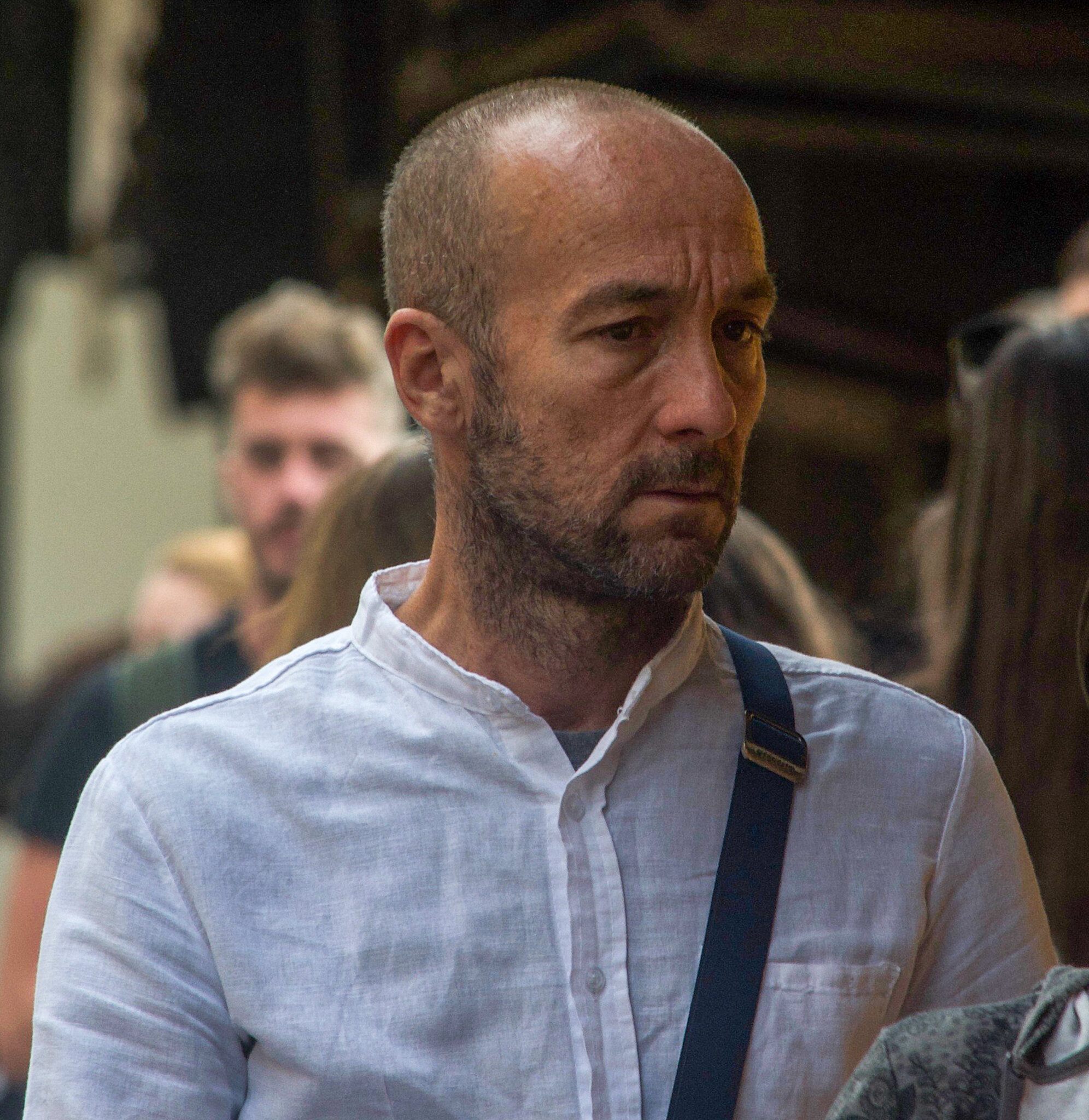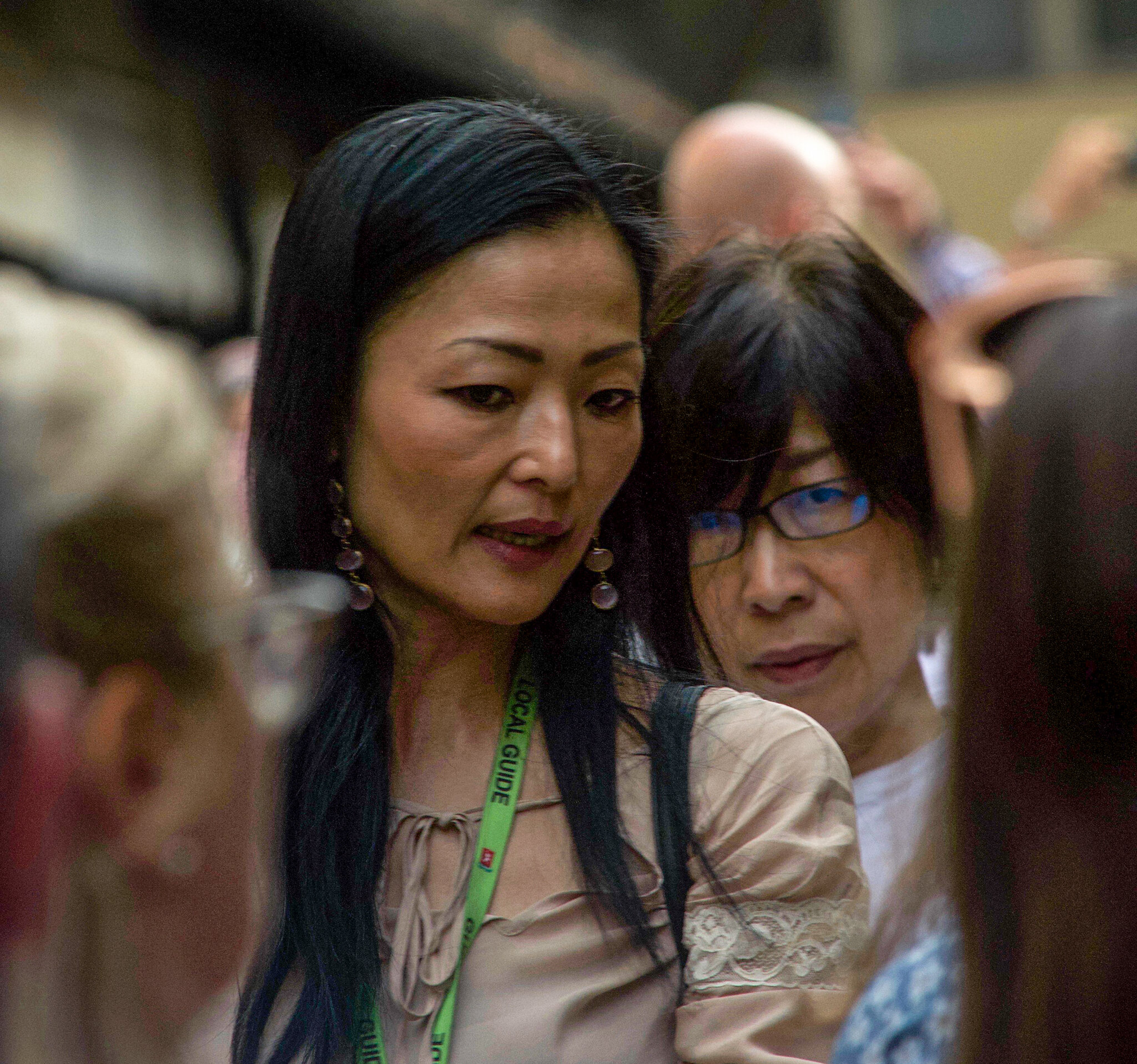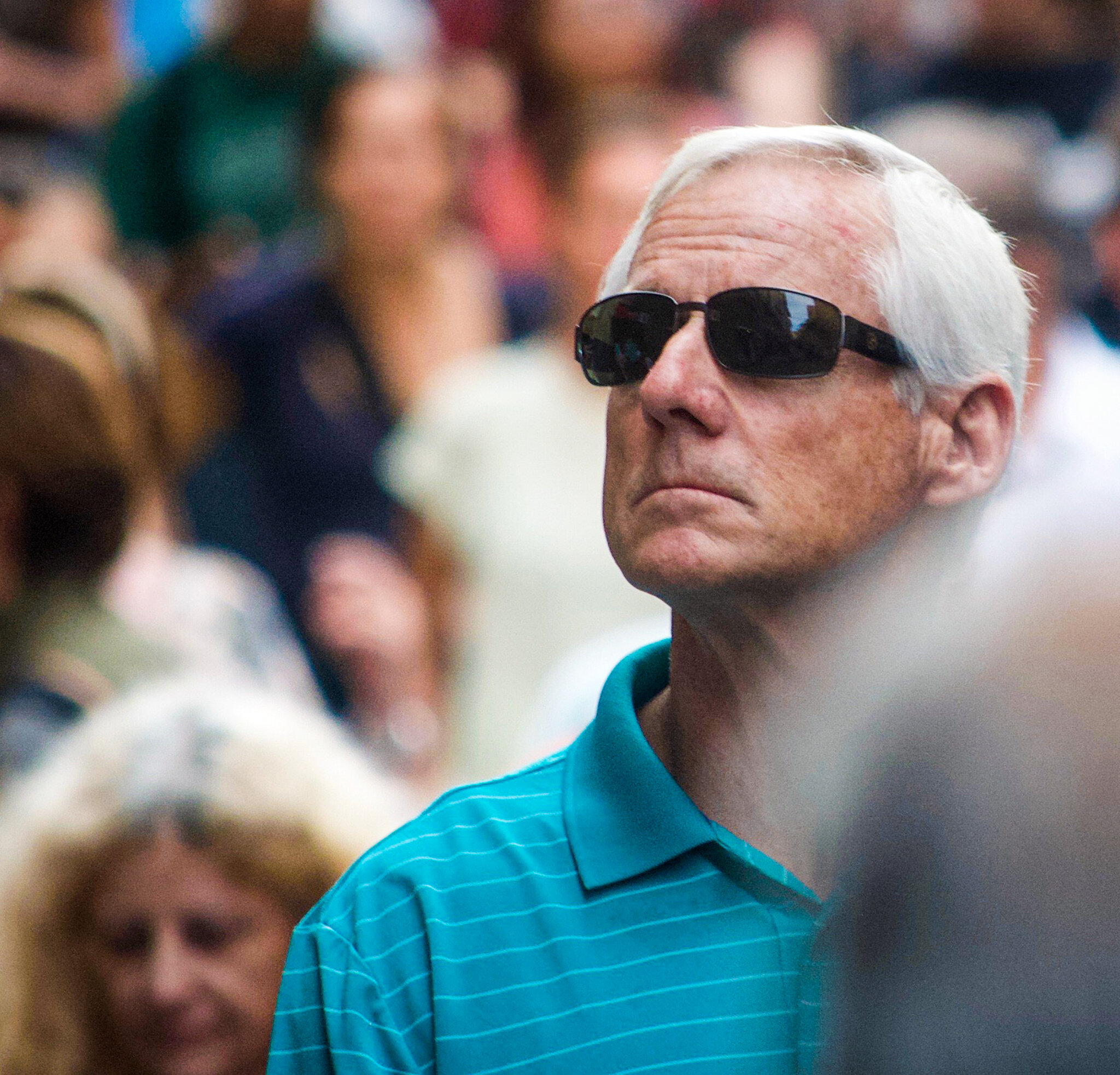As my sister searched for gold, I seized a golden opportunity to snap candid photos.
While she browsed the jewelry shops lining the Ponte Vecchio, the iconic bridge crossing the Arno River in Florence, I stood on its bustling lower walkway firing my Nikon at any pedestrian who passed unobstructed through my long lens.
The crowded bridge provided me with men and women young and old, sporting spectacles and shades, button-downs, blouses, t-shirts and v-necks, baseball caps and bear heads. Some wore beards and scruff, others were cleanly shaven. Most were window shoppers, many were sightseers. One nursed an ice cream cone, another smoked a stogie and chatted on a cell.
I shuffled around to different spots to capture passers-by from varied angles, heights, backgrounds, light and shade. I walked away with some money shots; my sister a pair of earrings.
Built in 1345 to replace a flood-flattened wooden bridge, the stone and tri-arched Ponte Vecchio (translation: “old bridge”) is the longest standing span in Florence. Meat and fish markets monopolized the walkway up until the late 1500s when jewelers and goldsmiths were permitted to set up shops. Earlier that century, the city’s ruling Medici family hired artist, architect and biographer Giorgio Vasari to design and build the enclosed Vasari Corridor atop the bridge to connect their residence, the Pitti Palace, to the town hall, the Palazzo Vecchio, on opposite sides of the Arno.
The Ponte Vecchio has survived centuries of periodic river-agitated floods, as well as aerial assaults by both Allied forces and the Nazis in 1944, when it was “spared by direct order of Hitler,” writes Judith Dupré in her book Bridges: A History of the World's Most Spectacular Spans. Today, the bridge is home to jewelers and art and antique merchants that attract tourists and natives alike.



